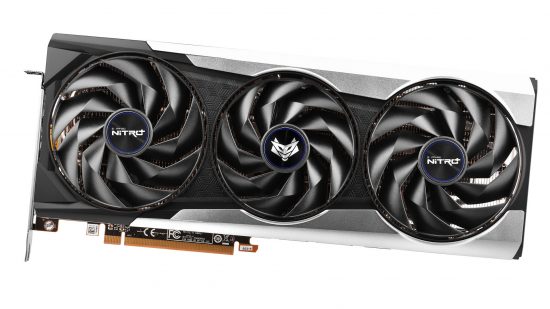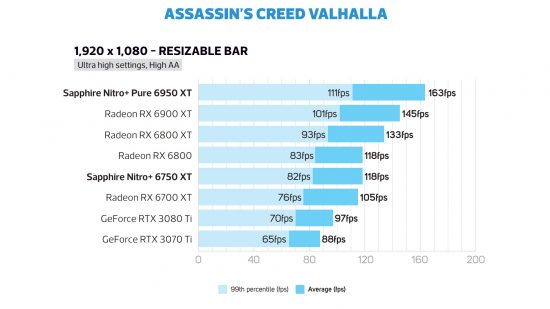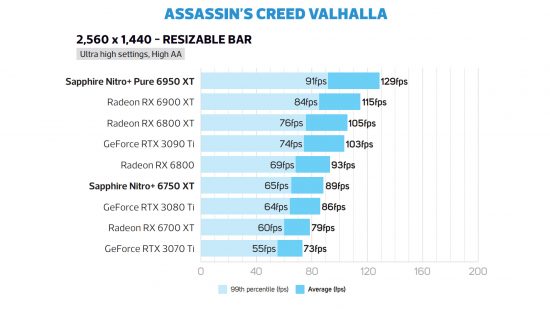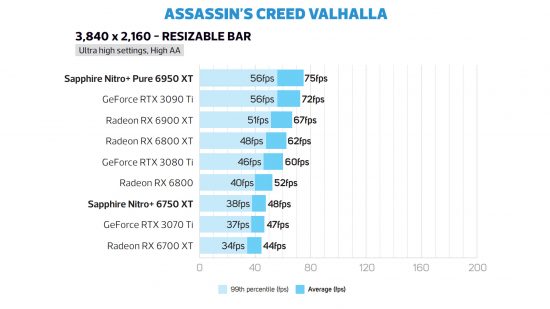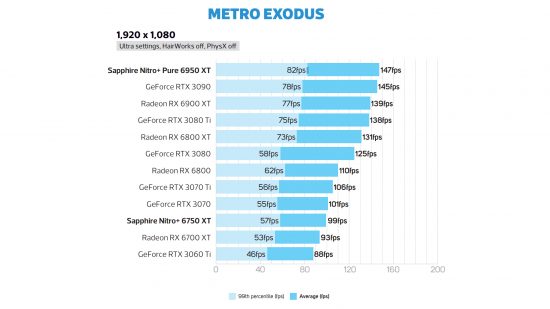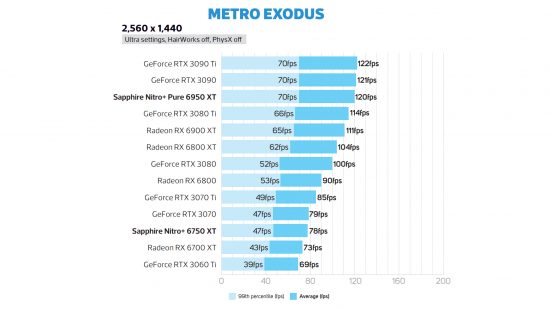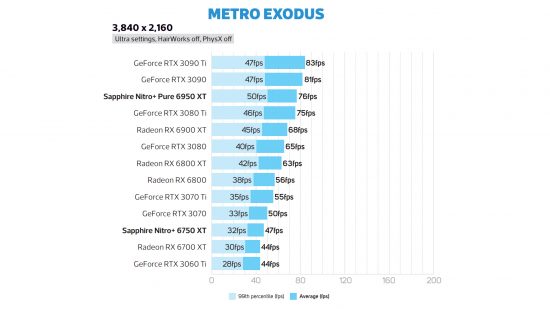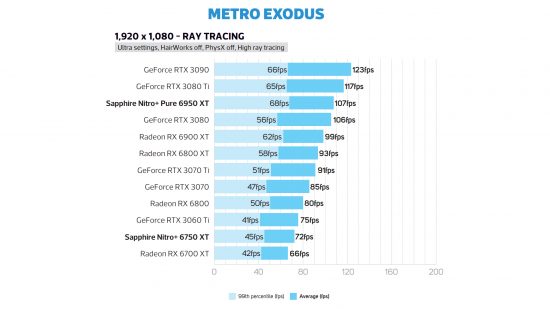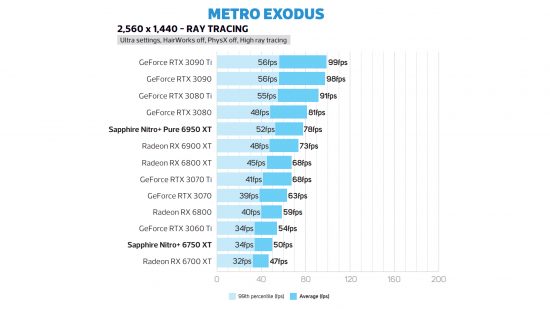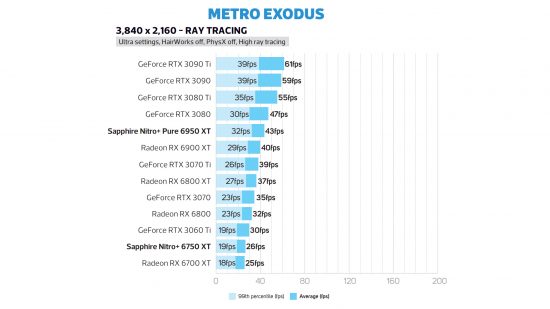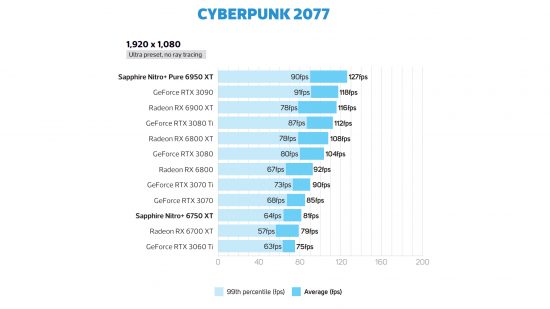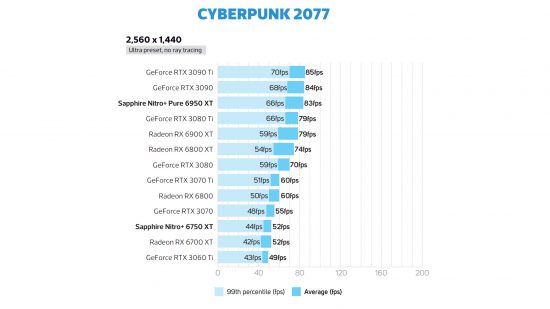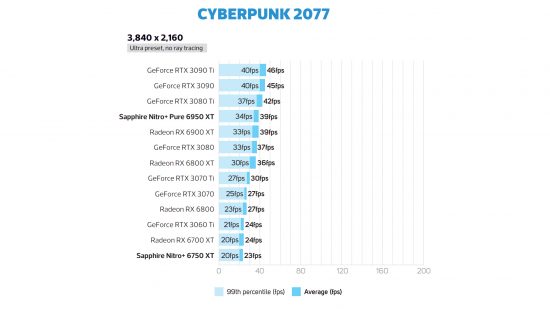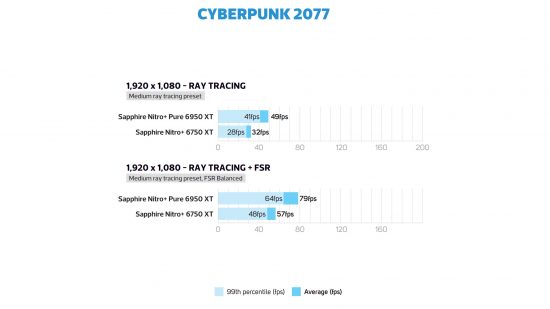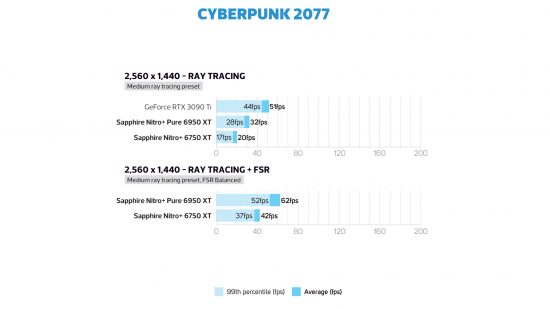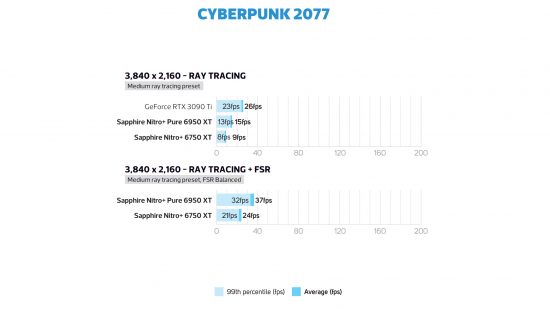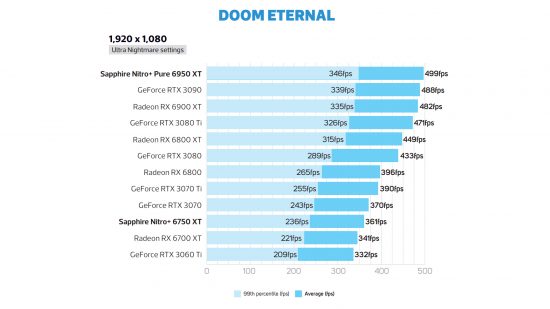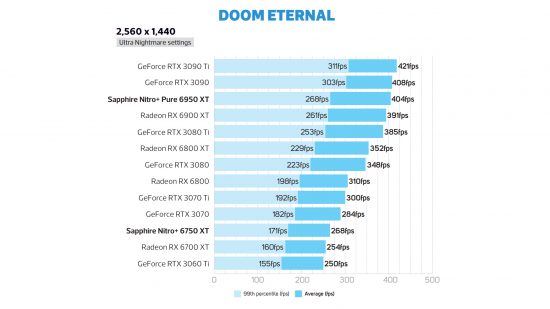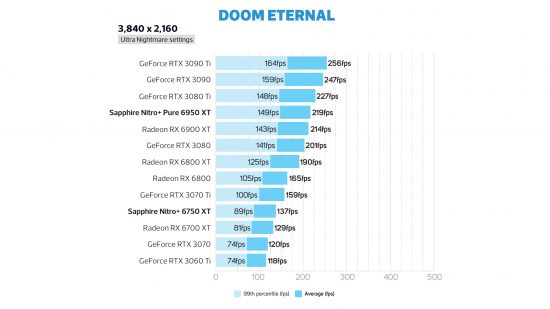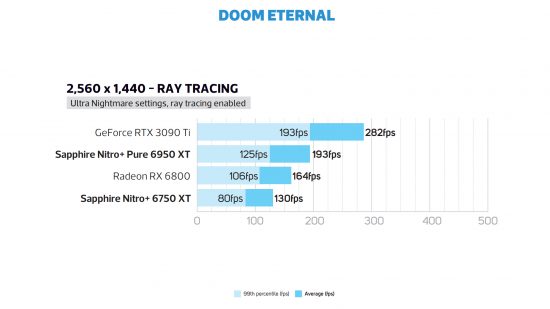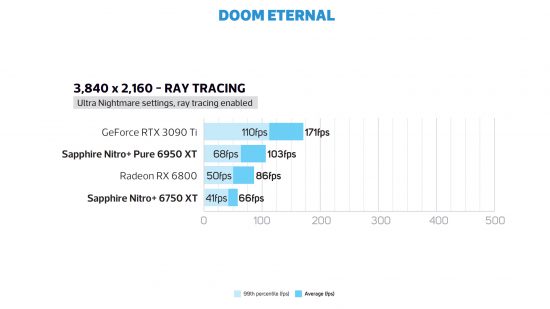Our Verdict
71%A solid bump in clock speed and a cool, quiet and good-looking card, but at this price, you’ll be better served by a GeForce RTX 3070.
Determined to squeeze every last drop of performance from its RDNA2 gaming GPU architecture before it disappears over the horizon, AMD has introduced some ‘new’ GPUs that add a ’50’ to their predecessors’ model names. At the top of the line is the Radeon RX 6950 XT, while in the mid-range sits the Radeon RX 6750 XT.
At Custom PC, we’ve been reviewing the latest gaming GPUs since 2003, and we run a number of grueling benchmarks in order to gauge performance. Our game tests include measuring the frame rate in Cyberpunk 2077, Doom Eternal, and Metro Exodus, all with and without ray tracing, and we also test with Assassin’s Creed Valhalla.
Don’t get too excited here – these aren’t new GPUs by any stretch of the imagination. They’re not even old GPUs with a couple more Compute Units enabled. The Radeon RX 6750 XT is basically exactly the same as the Radeon RX 6700 XT that came before it. There are 2,560 stream processors, 40 Ray Accelerators and 12GB of GDDR6 memory attached to a 192-bit wide interface.
The only differences are the clock speeds. For starters, the memory speed has been increased from 2GHz (16GHz effective) to 2250MHz (18GHz effective), which is faster than the reference memory clock on any of AMD’s previous RDNA2 GPUs. The core clock has also been improved, with AMD’s reference spec having a 2495MHz game clock and 2600MHz maximum boost clock, compared to 2424MHz and 2581MHz respectively for the Radeon RX 6700 XT.
The Sapphire Nitro+ card we’re reviewing here also increases those clock speeds a little further to 2554MHz and 2623MHz effectively. However, monitoring the clock speed during testing showed the real-world figures were much higher, with the GPU peaking at 2789MHz and averaging around 2697MHz.
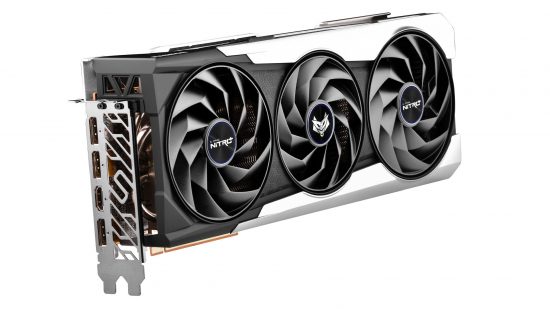
The Saphire Nitro+ card
The Nitro+ Radeon RX 6750 XT looks like the Nitro+ cards we’ve seen from Sapphire before. It’s a bit wider, taking up three expansion slots, rather than the two and a half of the Nitro+ 6700 XT, and there are some changes to the design of the backplate, but the two cards look very similar from the front.
You also get an expansion slot support bracket to prevent the card from drooping in your case, and there’s RGB lighting on the side edge and backplate of the card. There’s no RGB lighting on the fans, but that doesn’t really matter much when you won’t be able to see the fans in most cases anyway.
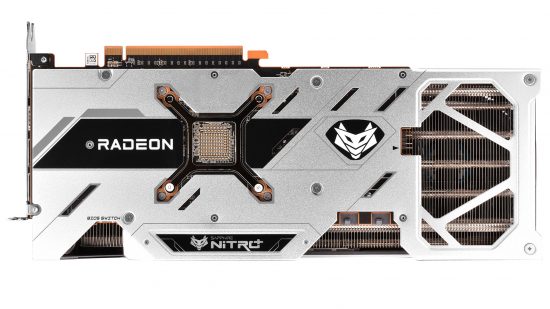
It’s a great-looking card, and you can switch between BIOSes by flicking a switch on top of the card, or using Sapphire’s Trixx software, which also enables you to control the lighting. The lighting options are a bit limited, with no option to cycle through different custom colors, for example, but the addition of a 3-pin ARGB header on the back of the PCB enables you to connect the lighting system to your own controller and sync it with the rest of your system.
we love Sapphire’s work on the cooler. The fans hit a peak of 1,620rpm under load in our tests, and you could barely hear them even then. The peak GPU temperature of 60°C, and peak junction temperature of 86°C, are also fine, and there was no evidence of throttling, with the GPU able to go well beyond the stated maximum clock speeds. You’ll need to make sure your case has room for it, but this is a good-looking, quiet and cool-running card.
Assassin’s Creed Valhalla RX 6750 XT frame rate
Let’s start with the good news, which is that the Sapphire Nitro+ 6750 XT’s extra clock speed really helps it in AMD-optimized games. At 1,920 x 1,080 and 2,560 x 1,440 with Resizable BAR enabled, it was even faster than the GeForce RTX 3080 Ti in Assassin’s Creed Valhalla, for example, with the frame rate staying well above 60fps at the latter resolution.
Metro Exodus RX 6750 XT frame rate
Sadly, the picture isn’t so rosy in our other test games. The Sapphire Radeon 6750 XT was consistently behind the GeForce RTX 3070 in Metro Exodus, for example, even without ray tracing, and it’s priced in a similar league to RTX 3070 cards.
Once you add some ray tracing to the mix, the situation gets worse, with the RX 6750 XT even lagging behind the cheaper GeForce RTX 3060 Ti across the board.
Cyberpunk 2077 RX 6750 XT frame rate
The Radeon RX 6750 XT is not a great GPU for playing Cyberpunk 2077. Without ray tracing, you can get a decent frame rate at 1,920 x 1,080, and a serviceable frame rate at 2,560 x 1,440, but the RTX 3070 is quicker and the cheaper RTX 3060 Ti isn’t far behind.
Again, if you enable ray tracing, this GPU really struggles, only averaging 32fps at 1,920 x 1,080 at the Medium preset. You can (just about) get a playable frame rate in Cyberpunk 2077 at 1,920 x 1,080 with Medium ray tracing if you enable FSR, but that’s a low bar for a card in the same price bracket as the GeForce RTX 3070.
Doom Eternal RX 6750 XT frame rate
On the plus side, the Radeon RX 67550 XT could handle Doom Eternal with ray tracing at 2,560 x 1,440, with a decent average frame rate of 130fps. It also held up surprisingly well in this game at 4K without ray tracing, averaging 137fps, compared to 120fps for the RTX 3070.
Comparatively, the Radeon RX 6700 XT is only a little slower than this card. That extra clock speed gives the 6750 XT an advantage in Assassin’s Creed Valhalla, but in other games, the difference is more muted, especially once you start playing at 2,560 x 1,440 – it’s not an enormous upgrade from the old GPU.
RX 6750 XT pros and cons
Pros
- Sapphire Nitro+ card has great design
- Awesome Assassin’s Creed Valhalla performance
- Faster than Radeon RX 6700 XT
Cons
- Struggles with ray tracing
- Can’t compete with RTX 3070
- Too expensive
Radeon RX 6750 XT specs
The Radeon RX 6750 XT specs list is:
| Stream processors | 2,560 |
| RT cores | 40 |
| ROPs | 64 |
| Game clock | 2495 MHz |
| Max boost clock | 2600 MHz |
| Memory | 12GB GDDR6 |
| Memory clock | 2248 MHz (18 GHz effective) |
| Memory bandwidth | 432 GB/s |
| Memory interface | 192-bit |
| L3 cache | 96 MB |
| Card interface | 16x PCIe 4 |
| Power connectors | 1 x 6-pin, 1 x 8-pin |
| Card length | 267 mm |
| Expansion slots | 2 |
RX 6750 XT price
Price: Expect to pay $570 USD / £570 GBP
RX 6750 XT review conclusion
We’ve been fans of Sapphire’s Nitro+ cards for a while, with their low-noise operation, decent build quality and great looks, and the Nitro+ Radeon RX 6750 XT is another fine example. It’s cool, quiet, great-looking and really well-designed. However, that’s not a lot of help when the GPU under all that cooling gear struggles to keep up with the competition, and that’s the case here.
The Radeon RX 6700 XT enjoyed a brief moment as our mid-range GPU of choice for a while, when it was significantly cheaper than the GeForce RTX 3070, but the price of Nvidia’s GPUs has now come right down, and not even a healthy injection of clock speeds can help this GPU compete with the RTX 3070 now that it’s in the same price range.
Our test sample is a top-end example of a Radeon RX 6750 XT card, of course, and there are cards going for around $570, but the same is also true for the RTX 3070. That’s a shame, as Sapphire has done a great job with the build. If you have $650 to spend on a graphics card, though, you’ll get better all-round performance from a GeForce RTX 3070 card.
For more gaming GPU options, check out our full guide to the best graphics card, which has a range of cards at different prices.
